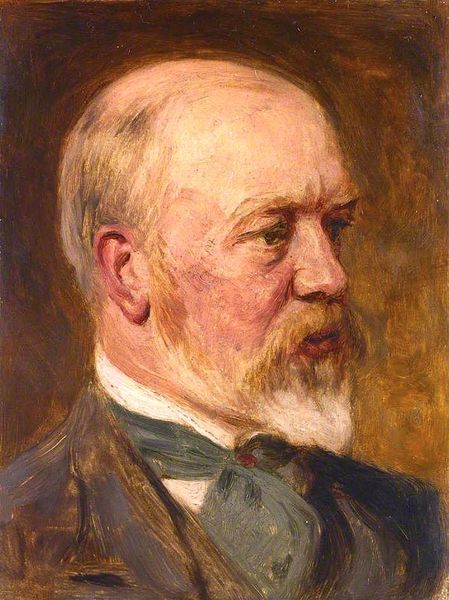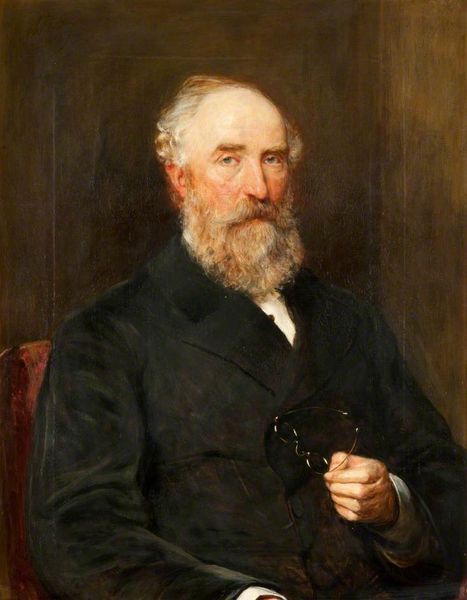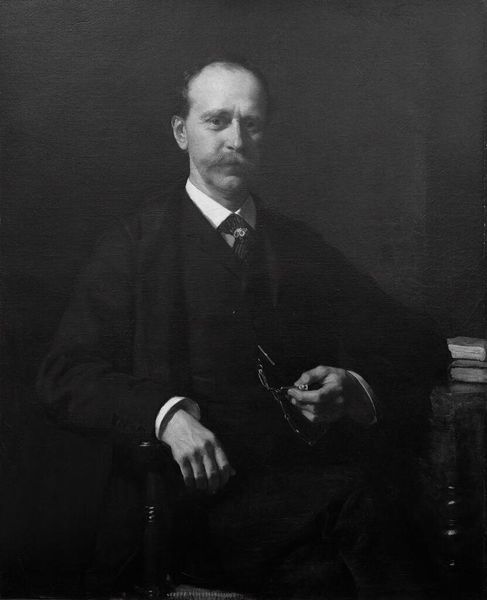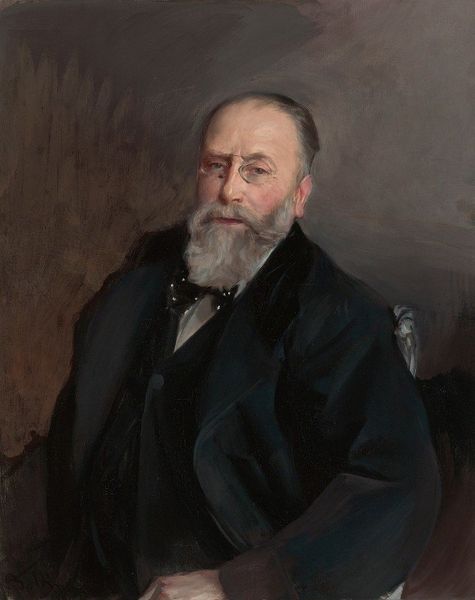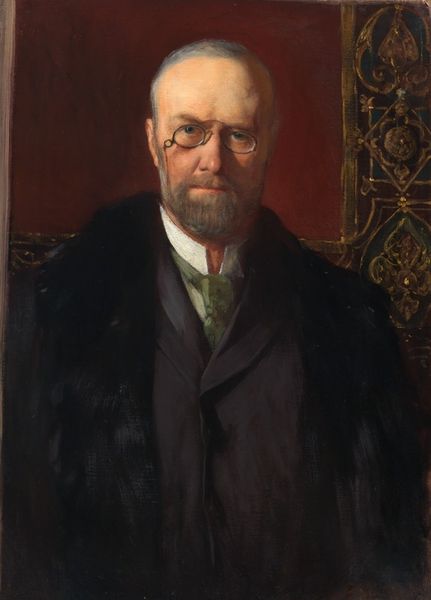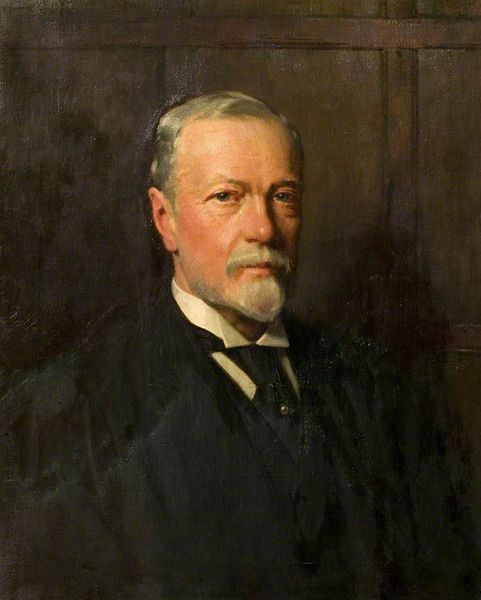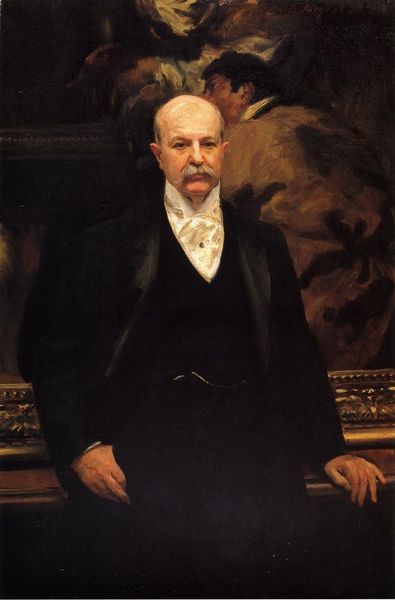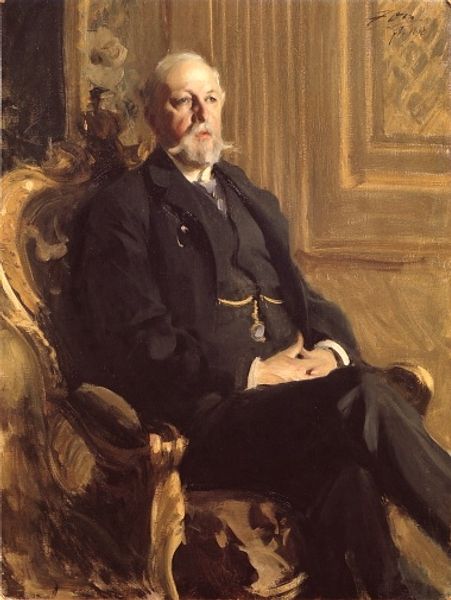
#
portrait image
#
portrait
#
male portrait
#
portrait reference
#
portrait head and shoulder
#
portrait drawing
#
facial portrait
#
portrait art
#
fine art portrait
#
digital portrait
Copyright: Public domain
Curator: Let's turn our attention to Frederick George Cotman's "Sir Edward Packard," painted in 1889. It's a distinguished portrait, capturing a gentleman of apparent importance. Editor: My first impression is of understated elegance. The limited palette and careful brushwork create a sense of dignified reserve. Curator: Absolutely. The late 19th century was a time of rigid social structures, and portraiture often served to reinforce these. A man like Packard, likely of considerable standing in his community, would have commissioned this to project an image of respectability and power. Think about the burden of representation in this context, particularly within the class dynamics of Victorian England. Editor: From a formal perspective, observe the composition—the way the artist uses a dark background to push Packard forward, highlighting the detail in his face and the crisp lines of his jacket. The contrast draws the eye, and creates a compelling focal point. Curator: I agree. The contrast isn't just aesthetic; it also speaks to the construction of masculinity at the time. The dark suit, a symbol of professional life, versus the carefully groomed facial hair, indicative of status and leisure. It's a carefully constructed performance of identity. Editor: There's also something quite interesting about the texture. Cotman uses subtle brushstrokes to give a sense of depth and volume. And the reflected light in his eyes… It imbues the subject with an undeniable vitality. Semiotics can also show how things like his beard have implied signifiers as well, showing wisdom and stature in the community. Curator: A vitality certainly informed by Packard’s social and political context. While the portrait aestheticizes his identity, we can use social theory to examine the implications of such a controlled representation. What does it mean to present a figure like this within the visual language of the Victorian era? It becomes a statement about power and belonging. Editor: It’s fascinating how a portrait can be a confluence of social and artistic forces. Examining elements of composition along with broader cultural factors enriches our perception. Curator: Precisely. Analyzing through intersectional narratives allows us to better grasp the portrait's complex layering of meaning. Editor: And by studying its visual language, its formal vocabulary, we perceive not just a likeness, but the very essence of an era, reflected in the subject's gaze.
Comments
No comments
Be the first to comment and join the conversation on the ultimate creative platform.
